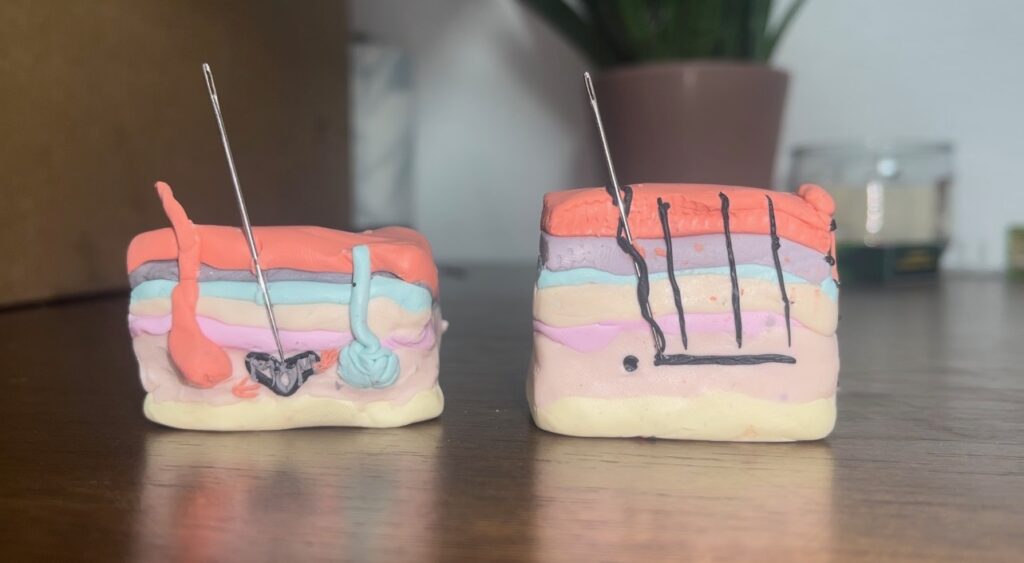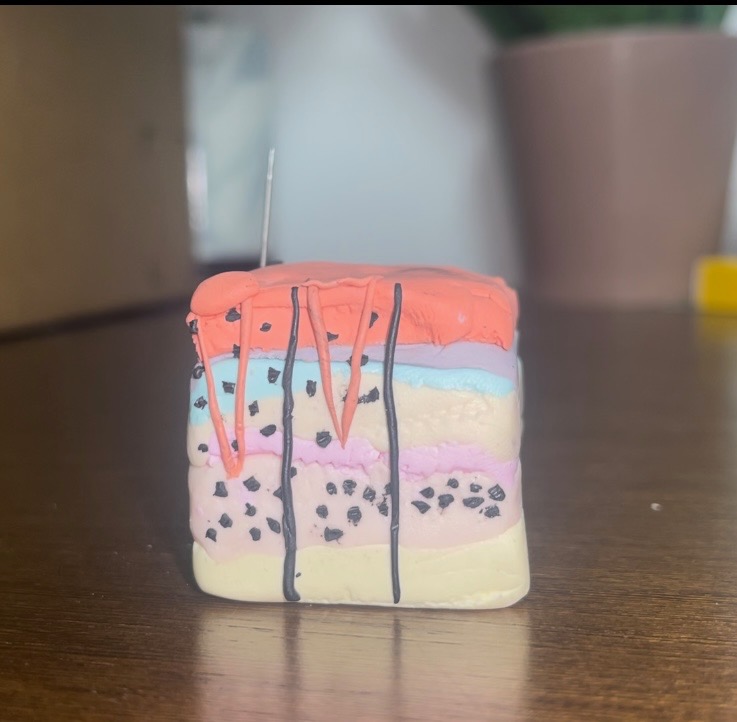

A living canvas; I did my steam project on tattooing and how they insert the ink to allow for these permanent images without our body being able to removing the ink. My project also covers healing of the wounds from the needles used to tattoo the skin.
Course objective: “Describe in depth each type of epithelial and connective tissue. Be able to describe their function and location.”

Helena Pederson’s STEAM Project demonstrates the depth in which the needles used for tattooing need to reach in order for the human body not to remove the ink during the healing process. In this project, Helena helps describe different types of epithelial and connective tissues and their locations. The design of this project helps us better understand the depth needed in tattooing someone. When a needle is inserted into the skin it goes through five sublayers of the epidermis, the dermal layer, and the top layer of the dermis. This is easily pictured by the different colors Helena used to signify the different layers of skin within her project. Helena goes on to better describe the healing process after one gets a tattoo. During the first day of healing, there is oozing and soreness noted from the site of the tattoo, this is completely normal to the process. At the one-week mark, most soreness and swelling should have gone down. At this stage of healing the body starts to get rid of the damaged cells in order to grow new healthy cells in their place. This process is associated with an itchy feeling and lots of flaking of the skin. At the two-week mark, the tattoo’s surface should still be a little flaky with larger scabs that are falling off more consistently. During weeks three and four of the healing stage the outer layers of the skin are almost completely healed, this is due to the keratinocytes cells that divide to help heal the site. Overall Helena’s presentation gives a deeper look into the tattooing process and the true mathematics that go into the art.